September 18/16 21:57 pm - Review: 2017 Specialized Roubaix
Posted by Editor on 09/18/16
We were lucky enough to be included among the few publications (roughly 20 worldwide) that were invited by Specialized to a pre-launch of the new Roubaix road line back in June. It involved flying to Paris, shuttling over to Kortrijk, Belgium, and riding the pavé ... with Tom Boonen. It also involved signing non-disclosure agreements until the official launch this month.
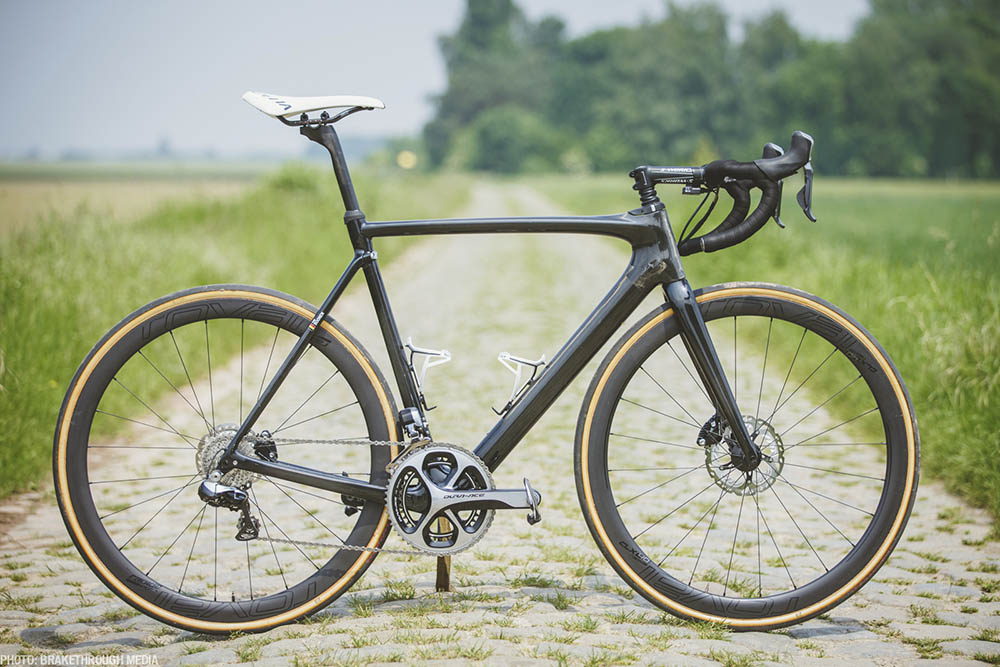
2017 Roubaix
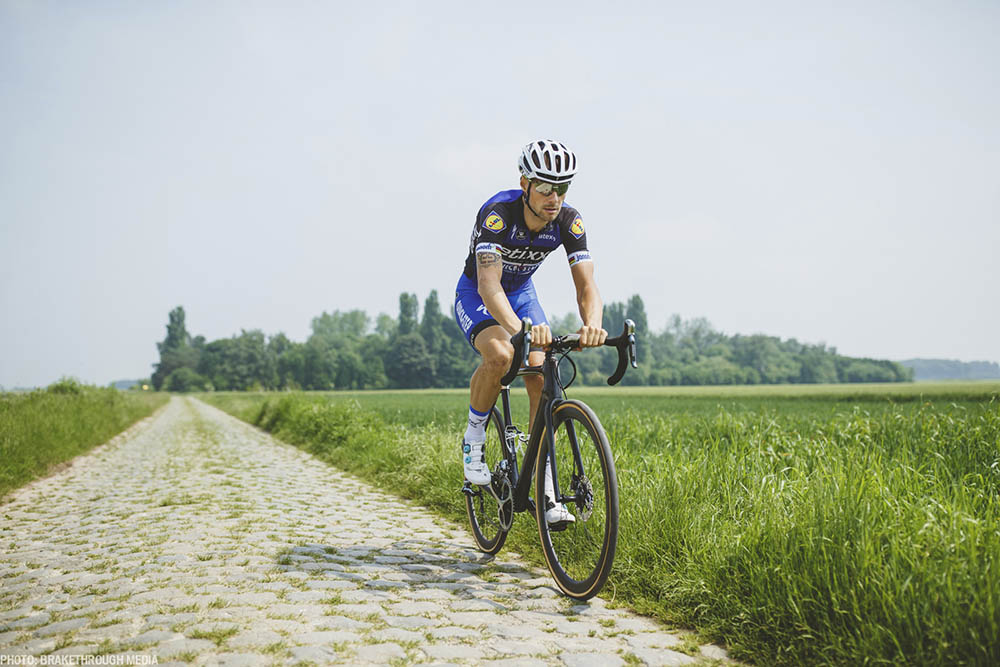
Tom Boonen putting the 2017 Roubaix through its paces on the Belgian cobbles
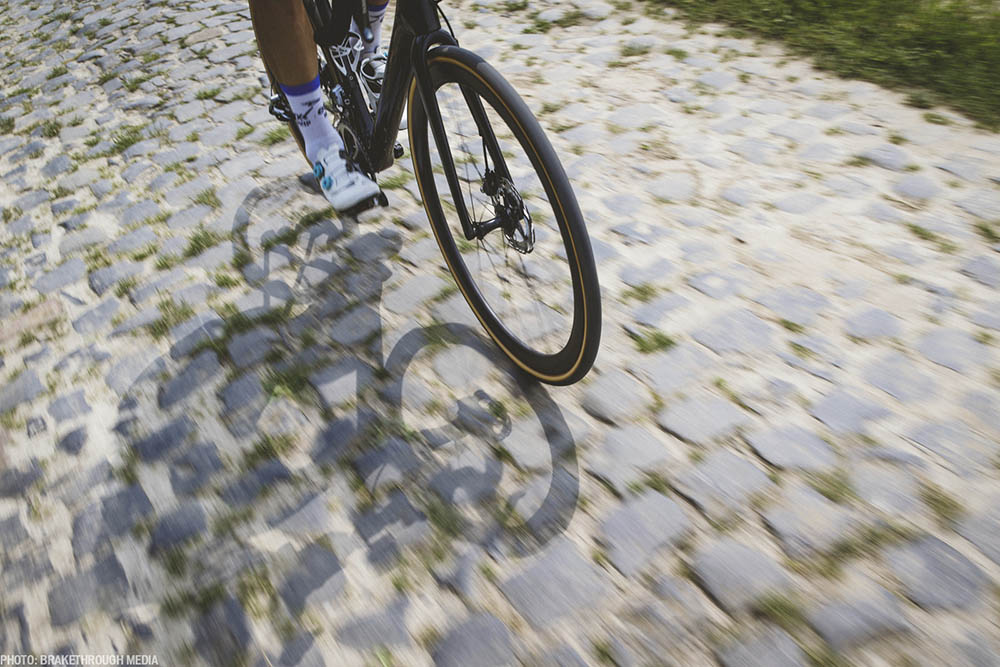
Tom Boonen putting the 2017 Roubaix through its paces on the Belgian cobbles
The Roubaix (and it's sister Ruby line) are the most important models in the Specialized line up - sort of like the iPhone is to Apple - so you don't want to mess with them unnecessarily. I've been riding and testing the Roubaix since it first came out in 2004, when it was a breath of fresh air among the ultra rigid, twitchy and unforgiving Crit geometries that were prevalent at the time.
The Roubaix was light, responsive and didn't beat you up, and hit the market around the time the Gran Fondo craze began - although it is more than suitable to race on, as many, many pros have shown (including Tom Boonen and Fabian Cancellara, who both won Paris-Roubaix on it). It quickly became the archetype for a style of road bike called endurance road, and I went to a number of product launches for other companies where designers admitted honestly, 'this is our Roubaix'.
Given its importance to Specialized's bottom line, it is a major gamble on the part of the company to introduce significant changes to the Roubaix, but they have done that with the 2017 edition, which brings front suspension to the design with Futureshock.
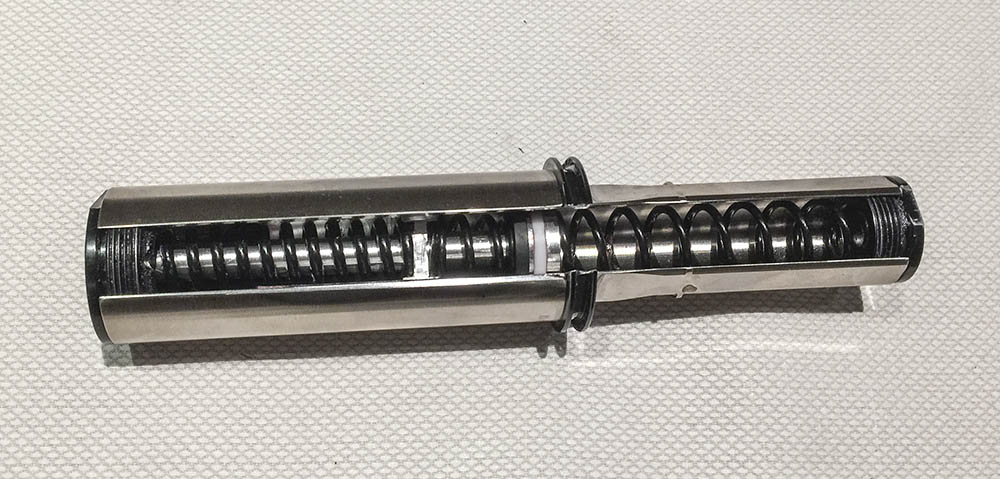
Futureshock cartridge
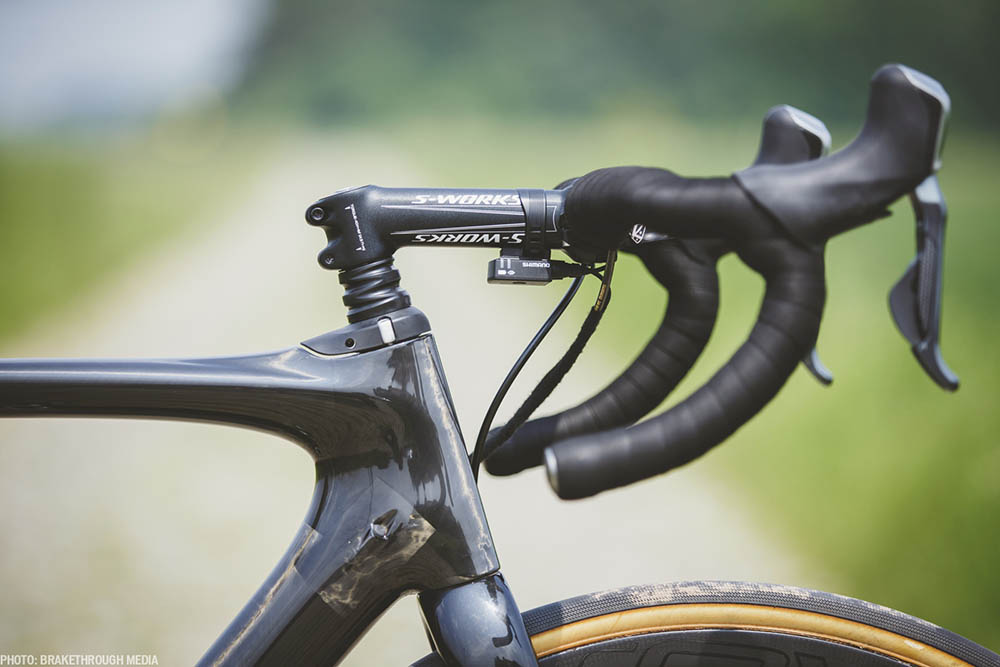
The Futureshock suspends the stem above the headtube
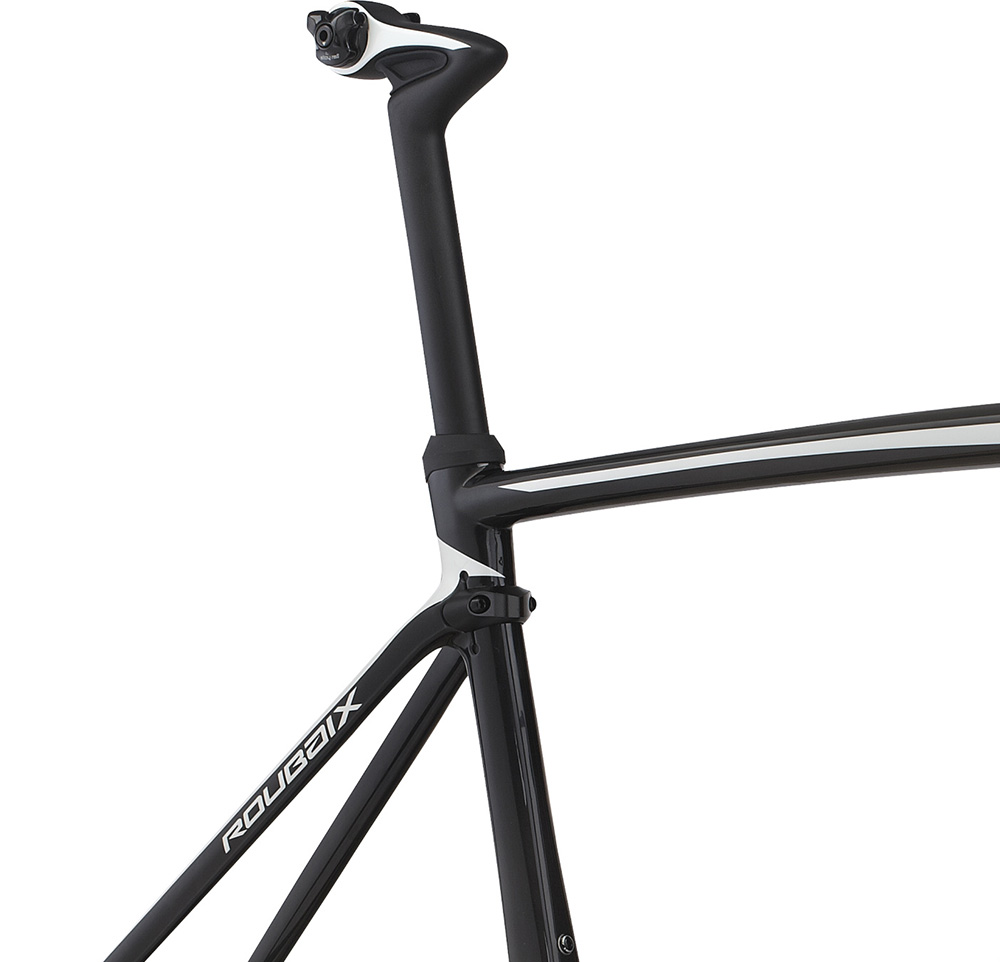
Rear suspension is provided by the CG-R seatpost and drop clamp seatstay assembly
Futureshock is not the only change, but it is, by far, the most significant and noticeable, so I'll start there. Front suspension isn't new, not even on road bikes, but it has usually been done as a lighter version of what is on a mountain bike, which means some portion of the fork moves below the head tube. This allows for a significant amount of travel, if necessary.
However, all that travel has a weight penalty and a stiffness penalty. Neither of those are as much of an issue on a mountain bike as they are on a road bike, given that you already have a much bigger (and lower pressure) tire on a mountain bike, plus the bumps you are hitting are orders of magnitude greater.
The Futureshock design on the Roubaix is meant to smooth out the ride, not absorb massive hits (which would destroy a road wheel or cause a crash anyway). To that end, the suspension is above the head tube, allowing the stem to travel up and down around the steerer tube. The travel is a maximum of 20mm, by means of a spring cartridge, with three spring options. Basically, the rider is suspended instead of the bike.
However, the new Roubaix isn't just the old one with some vibration damping on the front; it is an integrated package. For the rear contact point - your butt - the Specialized CG-R suspension seat post provides 18mm of vertical compliance. The CG-R (also known as the Cobble Gobbler) is not new - I tested the first edition of it a few years ago. It is a carbon post that works on the leaf spring principle and, again, is suspending the rider rather than the bike. This is amplified by the repositioning of the seat stay and seat post clamp connection to the seat tube further down the seat tube from it's usual position where the top tube and seat tube meet. Specialized claims that this results in 20 degrees of rearward arc compliance.
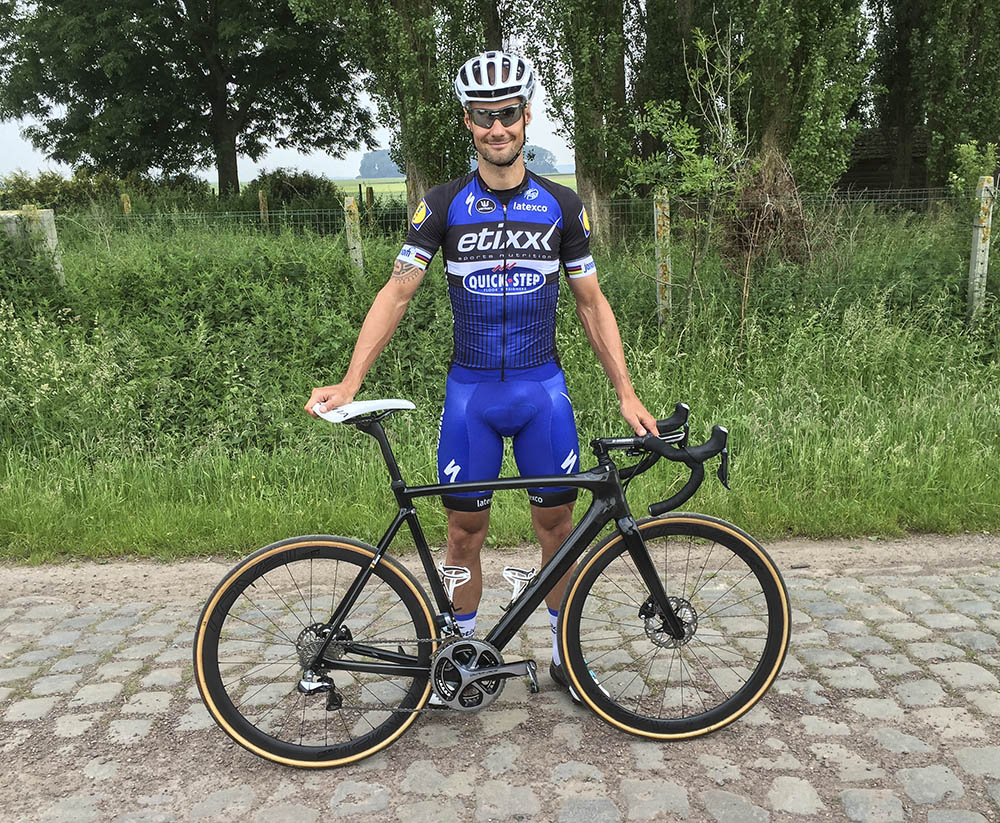
Tom Boonen with the 2017 Roubaix on the Belgian cobbles
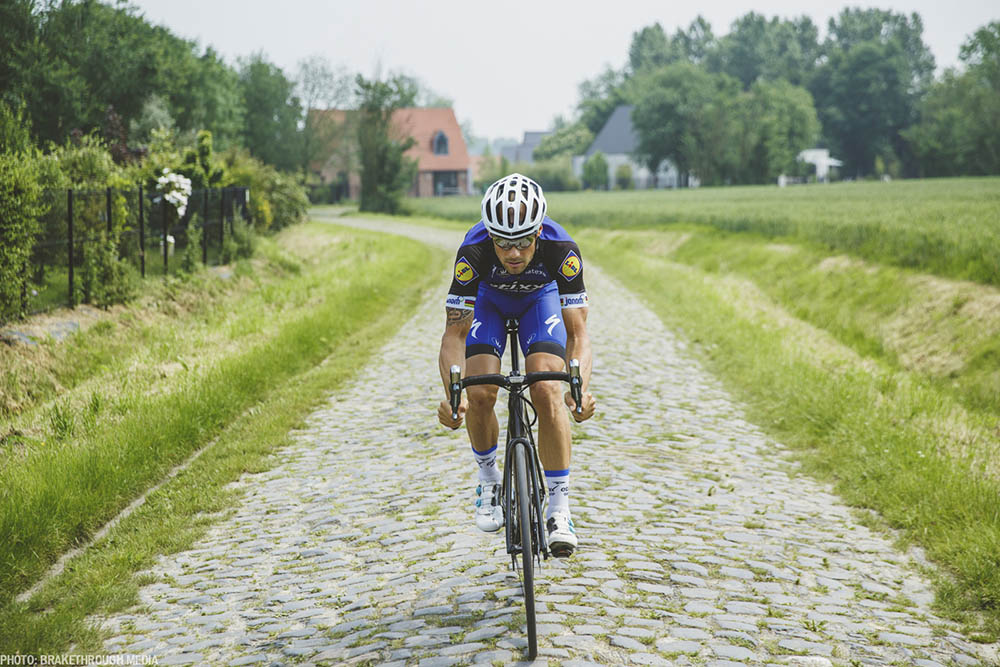
Tom Boonen putting the 2017 Roubiax through its paces on the Belgian cobbles
One effect of this suspension type is that it has no impact on the wheelbase or steering geometry, which is a very important consideration for the precise handling and rigidity that is important for a road bike. The new Roubaix geometry now closely matches the Tarmac, while still offering a less jarring ride.
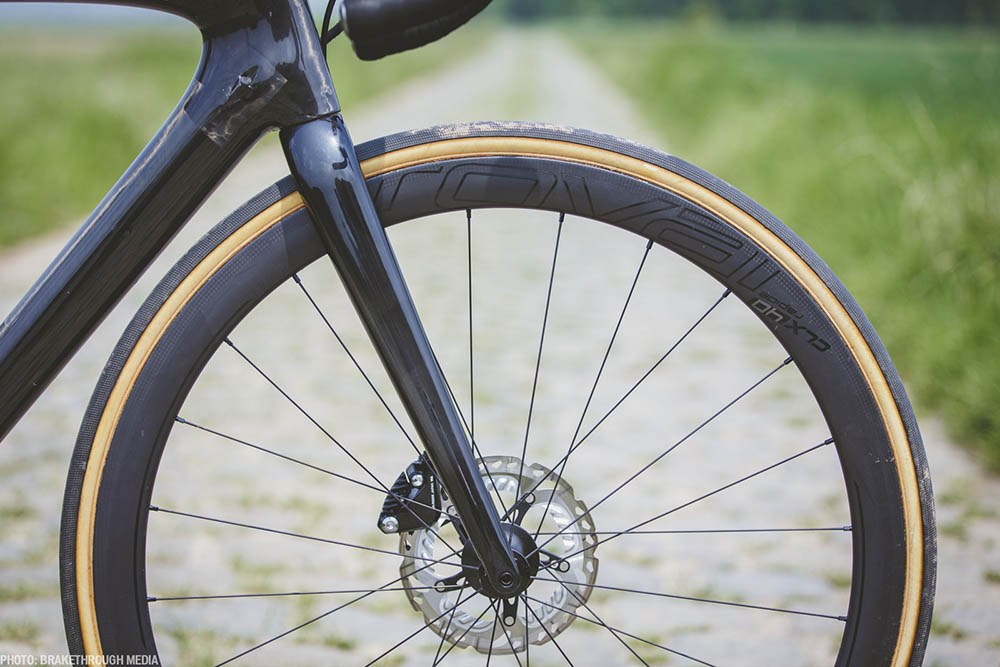
The 2017 Roubaix models all come only with disc brakes
The new Roubaix effectively replaces the previous one (called the Roubaix SL4) with five models, including an S-Works model at the top with SRAM's eTap electronic drivetrain. The frameset will also be available separately. They all come only with disc brakes - which should be noted if you plan to race in UCI sanctioned events. However, Specialized Canada will still offer three Roubaix SL4 models with rim brakes for 2017. Canadian pricing is further down.
Now, the big question: does it really make a difference?
Unfortunately, I cannot completely answer that, based on the limited time I have had on the bike thus far. A long term test is in the works but, right now, my impressions are based on two rides, totaling 60-70 kilometres. They were also on unfamiliar roads, including sections of Roubaix pavé, which are not normal riding conditions - cool, but not normal. When I asked Tom Boonen for his impressions, he basically gave me the same answer, since he had had his bike about the same length of time as us.
So, what I can say is that the ride is at least as good as the SL4 Roubaix - smooth without flex, great climbing, even better descending. The suspension, once you stopped paying attention to it and trying to make it flex, seems to do its job; it is not noticeable and certainly not a drawback. I hope to be able to provide more detailed feedback once we have had it on our regular roads for a while.
Bottom line is that there are no downsides to the new Roubaix, and potentially a lot of upsides.
2017 Roubaix Models and Canadian MSRPs
S-Works Roubaix eTap - $11,679
S-Works Roubaix frameset - $4819
Roubaix Expert Ultegra Di2 - $6869
Roubaix Expert - $5529
Roubaix Comp - $4769
Roubaix Elite - $3379
Roubaix SL4 Comp Ultegra Di2 - $4509
Roubaix SL4 Sport - $2719
Roubaix SL4 - $2459
Note: The women's Ruby models are identically priced (no frameset option), and the SL4 versions are the non-suspension previous frame design.
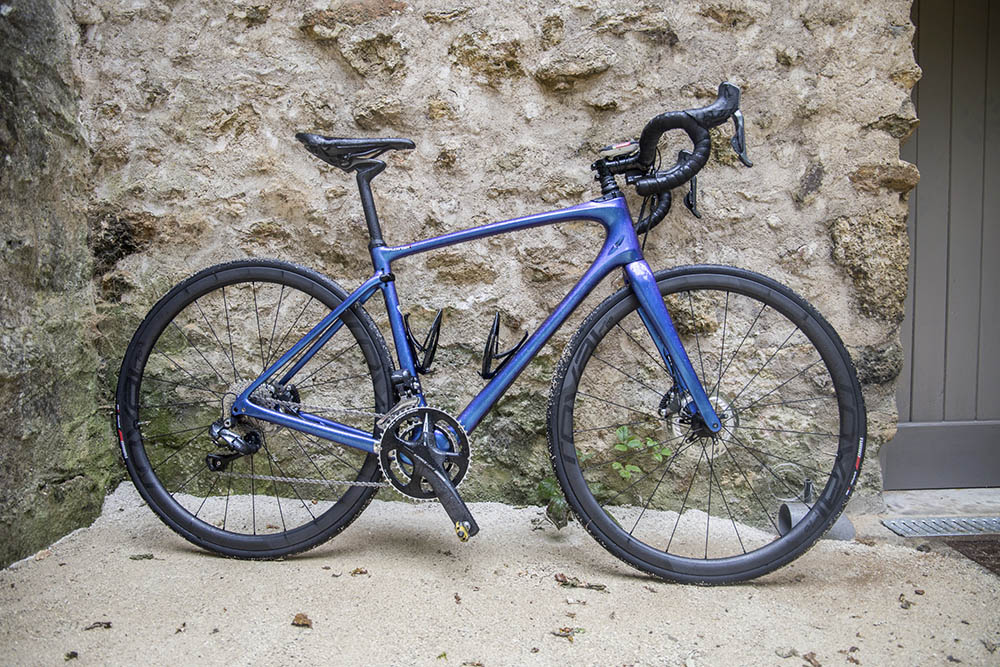
Ruby
| Return to Canadian Cyclist homepage | Back to Top |





